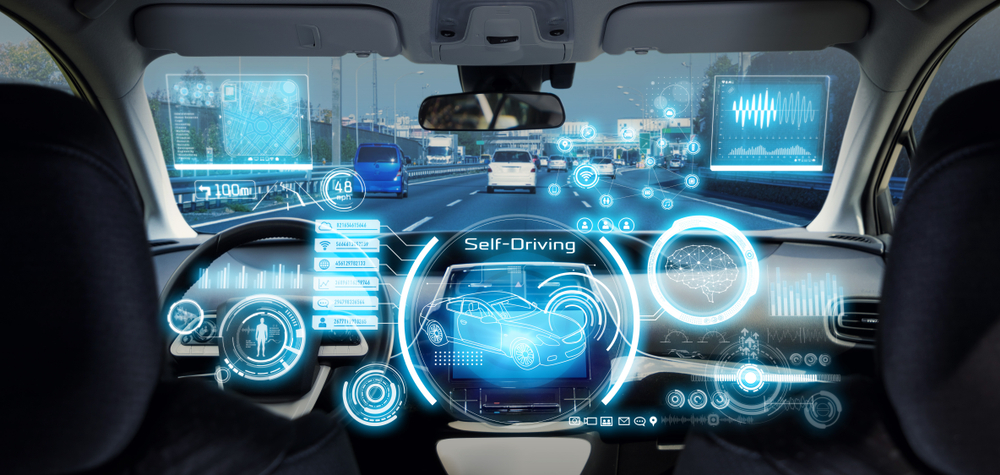ADAS systems for autonomous cars: a constant evolution
Autonomous cars with ADAS systems feature advanced technologies to simplify driving and ensure user safety. A real revolution in the automotive world!

Road accidents, caused by carelessness or fatigue, are commonplace. Carmakers are constantly working on technologies to make driving easier and safer. The autonomous car with its Advanced Driver Assistance Systems (ADAS) is one of the most successful results of all these years of research. These tools assist drivers during their journeys and help limit accidents by anticipating hazards. How does the autonomous car work, and what are these famous ADAS systems?
The autonomous car, a great innovation
In the automotive industry, the autonomous car is undoubtedly one of the greatest innovations of recent years. Otherwise known as intelligent, automated or connected vehicles, they are equipped with functionalities and artificial intelligence that enable them to drive autonomously. Automotive professionals are constantly looking for ways to innovate, and ADAS systems are a major focus of research and development. The aim of these investigations? To simplify the driver's actions and make driving safer.
ADAS systems
Advanced Driver Assistance Systems (ADAS) are the various technologies integrated into autonomous cars to make the driver's job easier.
ADAS include both passive and active systems. The latter enable the car itself to take measures to prevent accidents. Passive systems, on the other hand, are decision-support tools. They transmit information to the driver, enabling him or her to make the best choice.
They are classified in several levels of autonomy, from 0 to 5, according to the Society of Automotive Engineers (SAE International). These levels help to better assimilate ADAS technologies and understand their limits.
- Level 0 requires total driver supervision, with no automation.
- Level 1 is a limited driving aid. It usually includes speed control and power steering. Hands remain on the steering wheel.
- Level 2 suggests partial automation with more driver assistance systems. Some specific actions are controlled by the vehicle, such as parking maneuvers and keeping in the middle of the lane.
- Level 3 means that the vehicle is capable of perceiving the environment on its own and adjusting its driving accordingly. It sees hazards, manages speed and overtaking.
- Level 4 offers automated driving on a fast lane in good weather. The driver intervenes very little, if at all.
- Level 5 allows the vehicle to be controlled by artificial intelligence. This means total autonomy and no need for a driver.
Control sensors
The autonomous car requires a large amount of data in real time, and needs to analyze it extremely quickly, even instantaneously.
To achieve this, the vehicle uses sensors to visualize its environment and detect objects or hazards. The control system for these sensors is based on three essential axes: perception,execution and decision.
Perception concerns the location and overall view of the vehicle's environment. This is made possible by GPS, LiDAR andIMU data.
The execution focuses on the interconnection between different vehicle devices such as the gearbox, brakes and gas pedal. These are controlled via a driving computer to facilitate the vehicle's mechanical actions.
Decision-making involves forecasting, anticipation and trajectory programming.
The advantages of ADAS systems for autonomous vehicles
ADAS systems can be categorized according to two types of objective: those designed to ensure the safety of road users, and those designed for comfort.
More comfort
ADAS offer numerous improvements in driving comfort and flexibility. Thanks to all these technologies, driving a car becomes even more enjoyable. Here are just a few examples of ADAS:
- The rearview camera is now incorporated in all new cars. It provides a 360-degree view of the surrounding area to facilitate reversing maneuvers.
- The start and stop. It reduces the vehicle's fuel consumption by switching off the engine when it's not needed.
- The parking space detection system simplifies the search for parking spaces, saving time and stress!
- Hill-start assist is another tool to help drivers start safely on slopes.
More safety
The advantages of ADAS in an autonomous car are therefore considerable. The benefits in terms of comfort and driving assistance have been proven. Another major benefit is the enhanced safety of road users.
ADAS detect hazards and communicate essential information to prevent accidents. They make it easier to analyze the environment and spot obstacles on the road. They make journeys safer and more enjoyable.
For example, ABS, an anti-lock braking system, prevents sudden braking.Emergency Brake Assist (EBA),Drowsiness and Loss of AttentionWarning (DAW), Electronic Stability Program (ESP), Forward Collision Warning (FCW), Lane Change Assist (LCA) and Night Vision System (NVS) are other advanced technologies that help make driving safer.
With this autopilot system, the automotive market has a bright future. Experts predict that these vehicles will be part of our daily lives by 2030. The autonomous car represents a revolution that promises a radical change in the way we interact with our environment. Not to mention a safer, more comfortable driving experience.
Innovation is the key to meeting new needs, adapting to new markets and differentiating ourselves to stay competitive. AMEG Group can help you with all your projects. We look forward to hearing from you.



